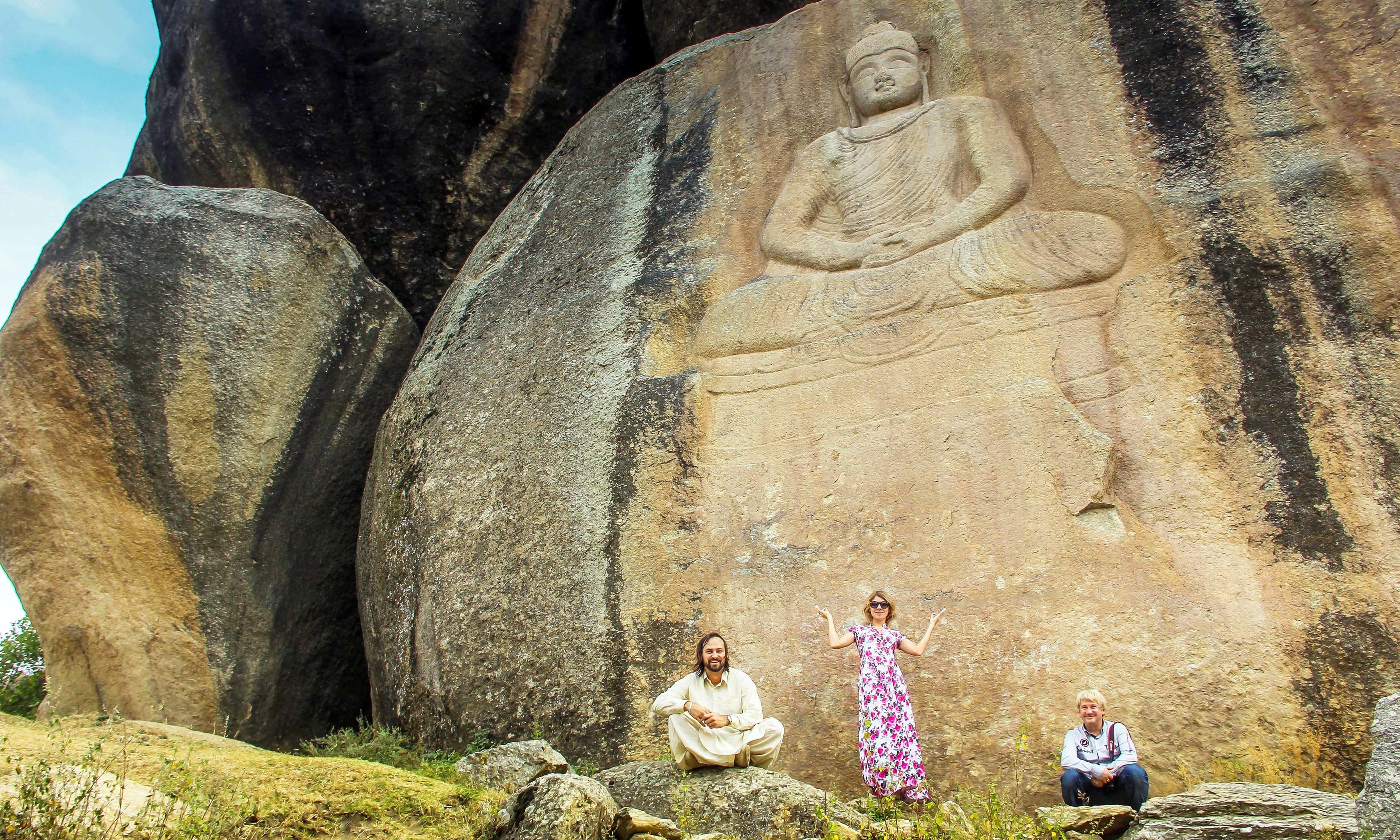The 7th century Buddha seated in a meditative posture which is considered one of the largest rock sculptures in South Asia was attacked in September 2007 by the Taliban, who blew up half the statue's face by drilling holes into the face and shoulders and inserting explosives.
The explosives in the face, when detonated, destroyed half its face, but the explosives in the statue's shoulders failed to detonate.
The defacement of the Buddha sparked worldwide anger and concern among the Buddhist community, historians and archaeologists.

The Italian Archaeological Mission in Pakistan were able to restore the statue to its original form after six scientific missions.
"It was our professional and moral obligation toward the people and heritage of Swat and Pakistan which forced us to restore the Buddha. It took about five missions of about a month each from 2012-2016 in its complete conservation program," said head of the Italian Archaeological Mission, Dr Luca Maria Olivieri, adding that international experts worked on the restoration process.
“Two restorers/trainers, two 3D scan experts/trainers, one chief restorer, five local restorers, 20 field workers, two carpenters, and three watch-keepers were involved in the restoration process, while the 3D equipment was provided all-inclusive by the University of Padua, Italy,” he said
"It was restored under the Archaeology Community Tourism (ACT) Field School project funded by Italian government, a joint project of the Directorate of Archaeology and Museums of Khyber Pakhtunkhwa and the Italian Archaeological Mission," Olivieri added.
Fabio Colombo, a restorer and member of the Italian Archaeological Mission who has vast experience in the field of conservation and who worked on-site in Bamyan, Afghanistan, said that he enjoyed the work at Jahan Abad as it was a very important historical site where the locals also gave him love and respect.

"It is one of the biggest rock sculptures in the region and different traces showed that it was once a central Buddhist location in the past. The surrounding of Buddha statue is peaceful, picturesque and serene. Owing to its historical, religious and archaeological importance," he told Dawn.
"I hope local people understand its value as it is one part of their history which also belongs to the entire world.”
Syed Niaz Ali Shah, an official and representative of the Archaeology department with Italian Archaeological Mission in the ACT project, said that Tibetan pilgrims who visited Swat in the past mentioned about the Jahan Abad Buddha along with a Buddhist temple here.
“Some of the highly technical and experienced Italian experts worked in the conservation and restoration process using 3-D technology for which we are thankful to them."
He said that the site would, once again, become a tourist spot as it was in the past. “I hope Buddhist visitors and other tourists will once again visit this place, not only to enjoy the area serenity but the rich cultural heritage of the region here,” Niaz Ali Shah hoped.
He said that the Buddha sculpture would play a vital role in the revival of International and national tourism.

After restoration of the Buddha the first foreign delegation which visited the site was Russians, who appreciated the classic sculpture art and the scenic location.
Yury Zhorno, a Russian tourist who visited Swat valley to see Buddhist archaeological monuments and rock carvings, said he was excited to visit the iconic Buddha.
“The Buddha sculpture is really amazing not only for its history but also for its nifty carving. The view from the foot of Buddha is also amazing as Swat valley is beautiful,” he told Dawn.
He invited people from across the world who took interest in Buddhism and natural beauty and said there was no need to be afraid as there was perfect peace.
Another Russian tourist who is tour agent in Moscow and brings Russian tourists to Pakistan also liked the location of Buddha and said that it was good sign that the situation in Pakistan was improving.
“The security situation here in Swat valley is very good and when we came here so the army assisted us everywhere and we feel safe here,” he said, adding that Pakistan had huge potential for tourists with diverse landscapes and rich culture heritage and people from across the world should visit it.
Abdul Bari a resident of Gilgit Baltistan and an owner of the tourist company said Swat was the most beautiful place in Pakistan with oldest Buddhists records in form of archaeology.
“People of the valley are also hospitable so I want tourists to come here and discover all these things at the same time,” he said, adding that the government must promote tourism and attract tourists from across the world here.
— All photos provided by the author.












